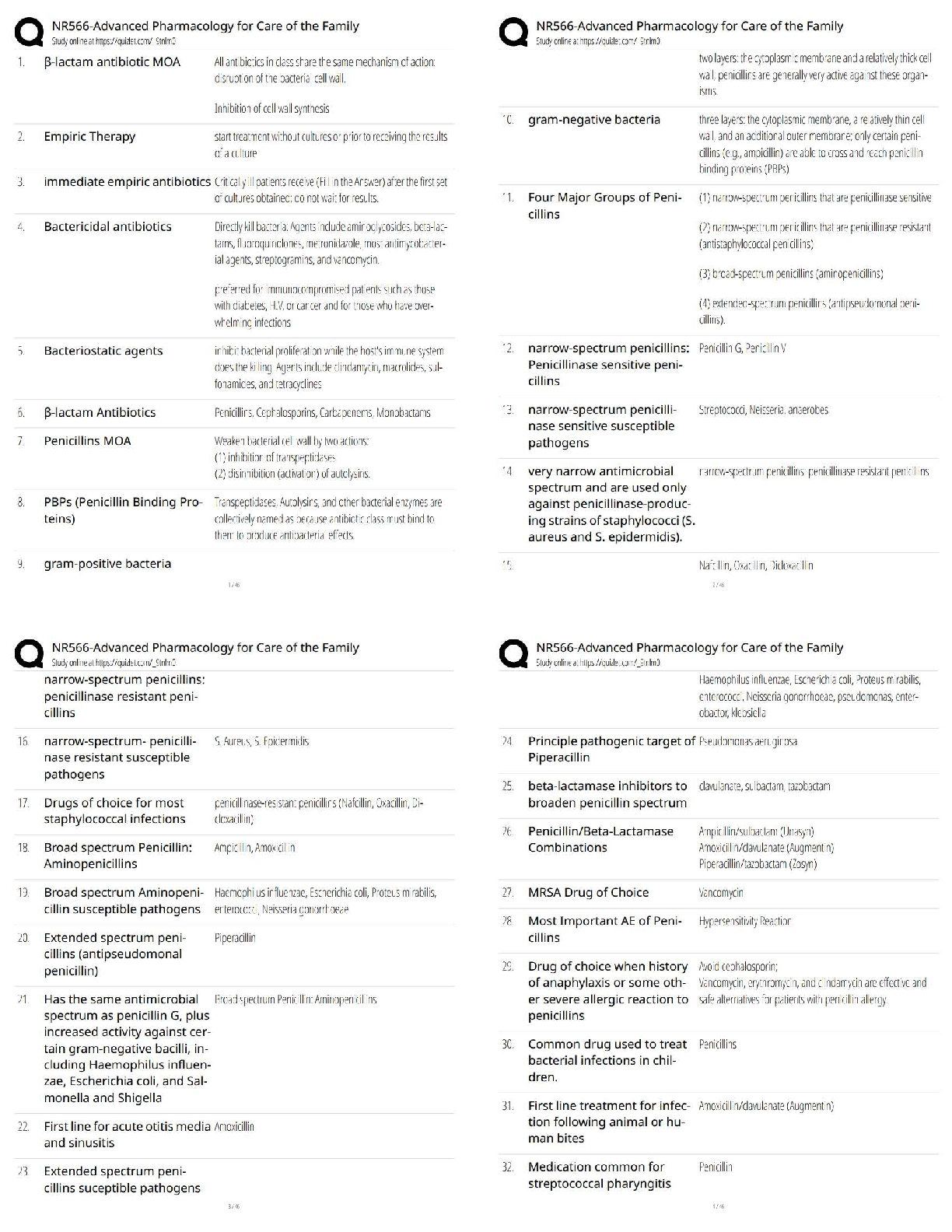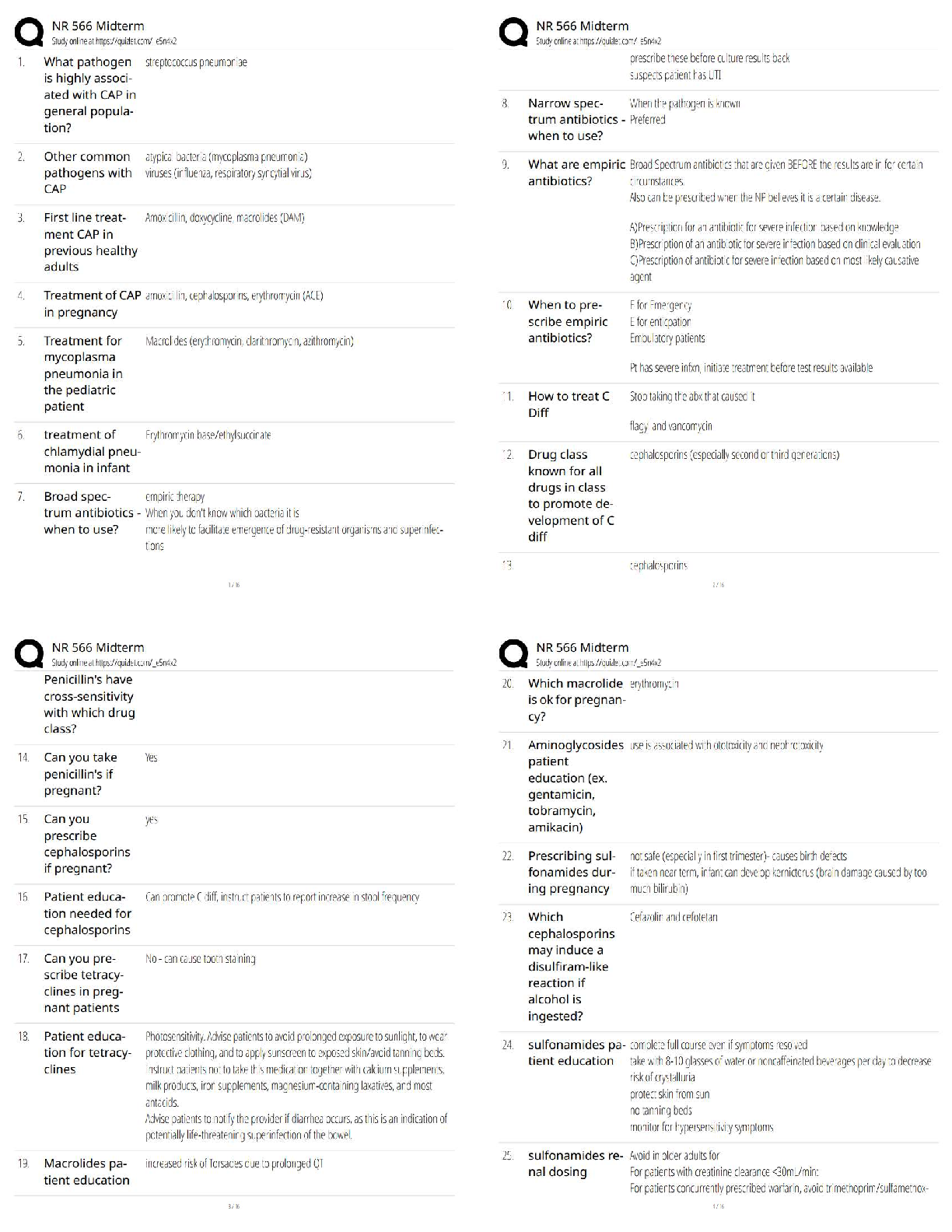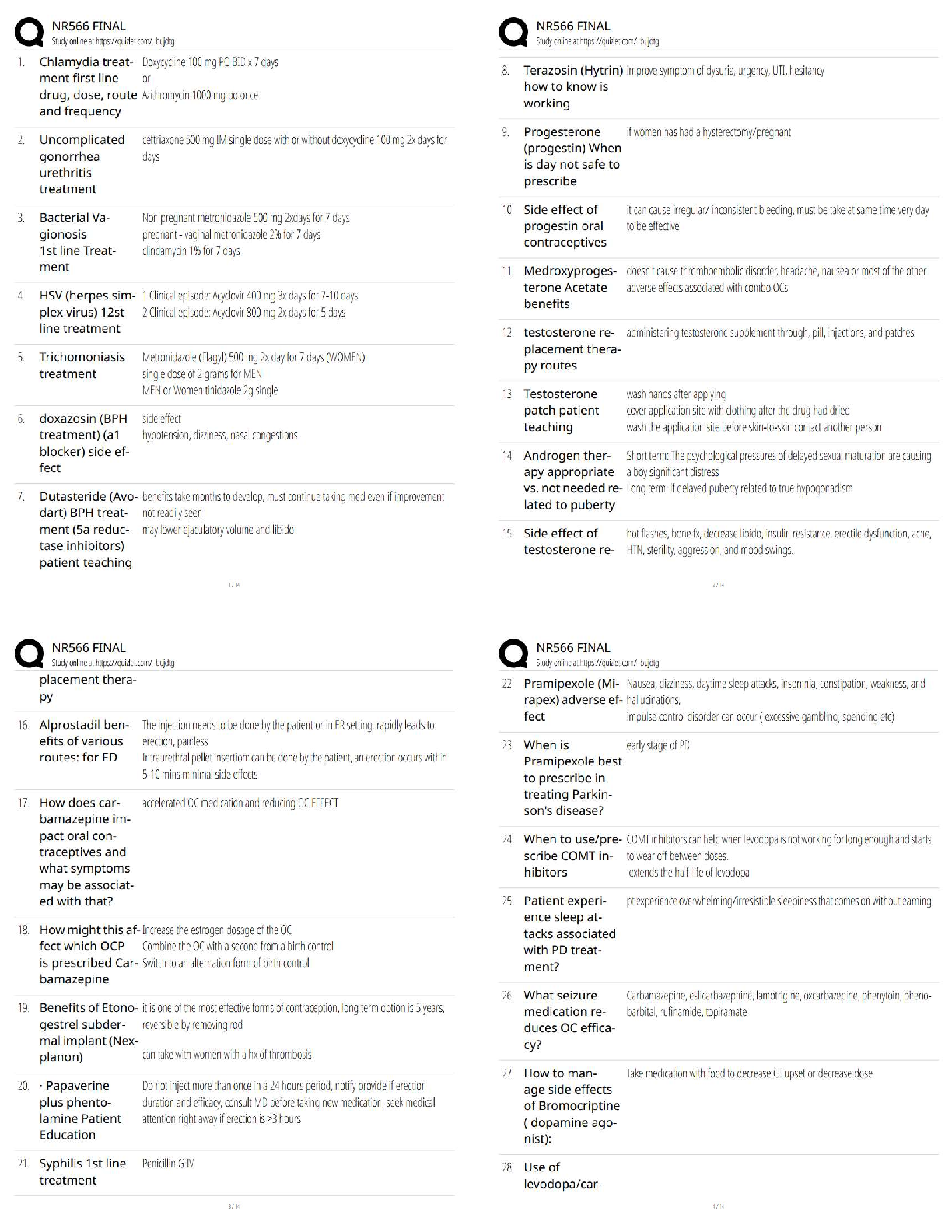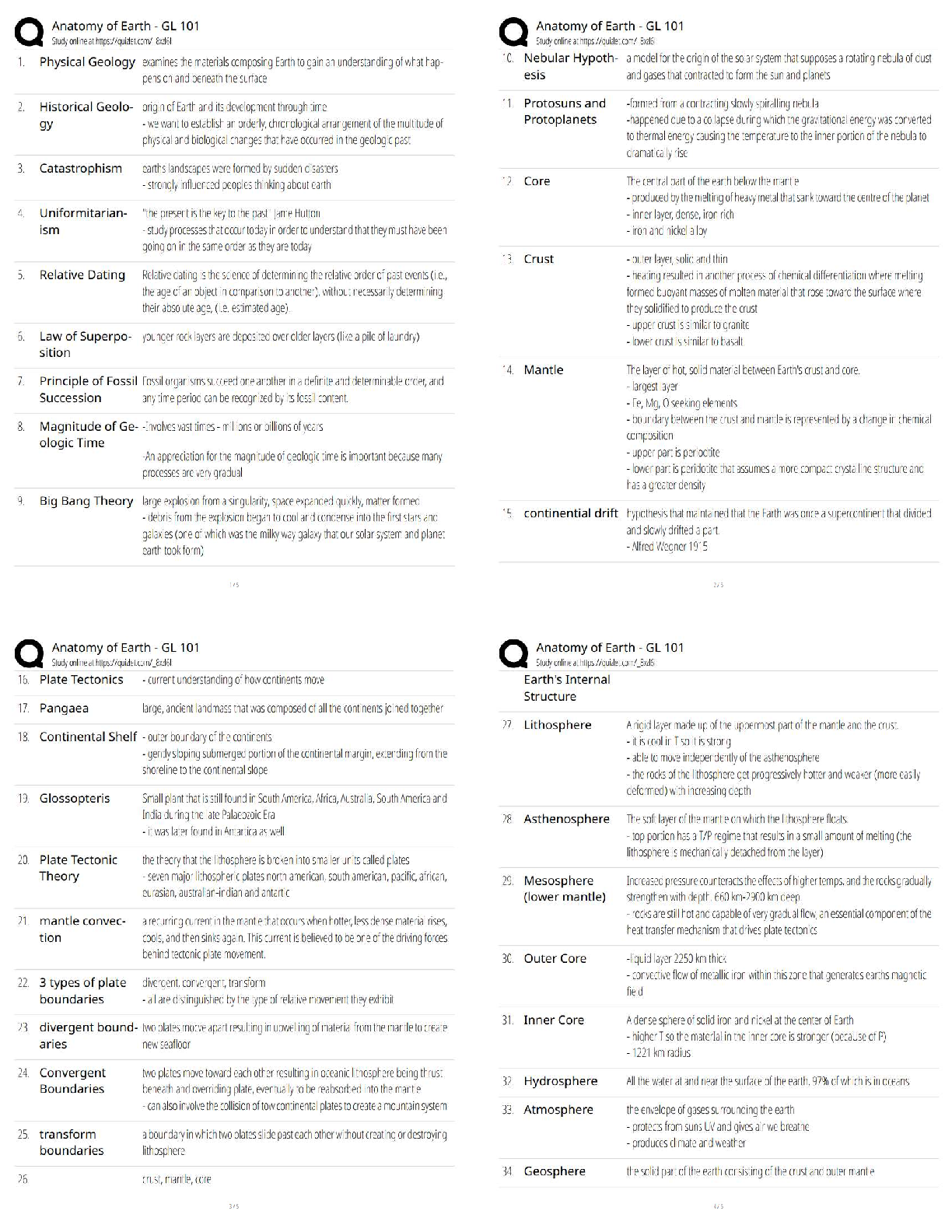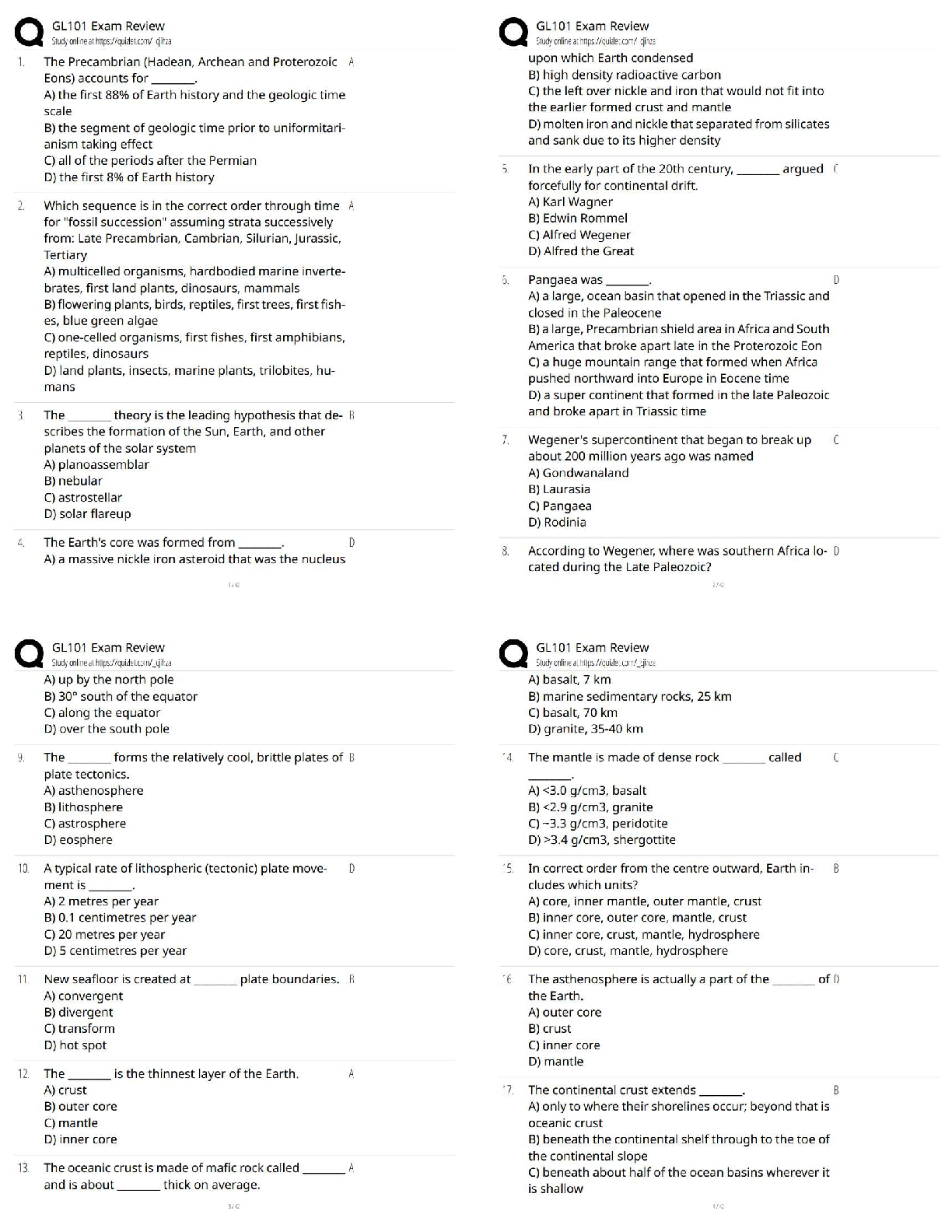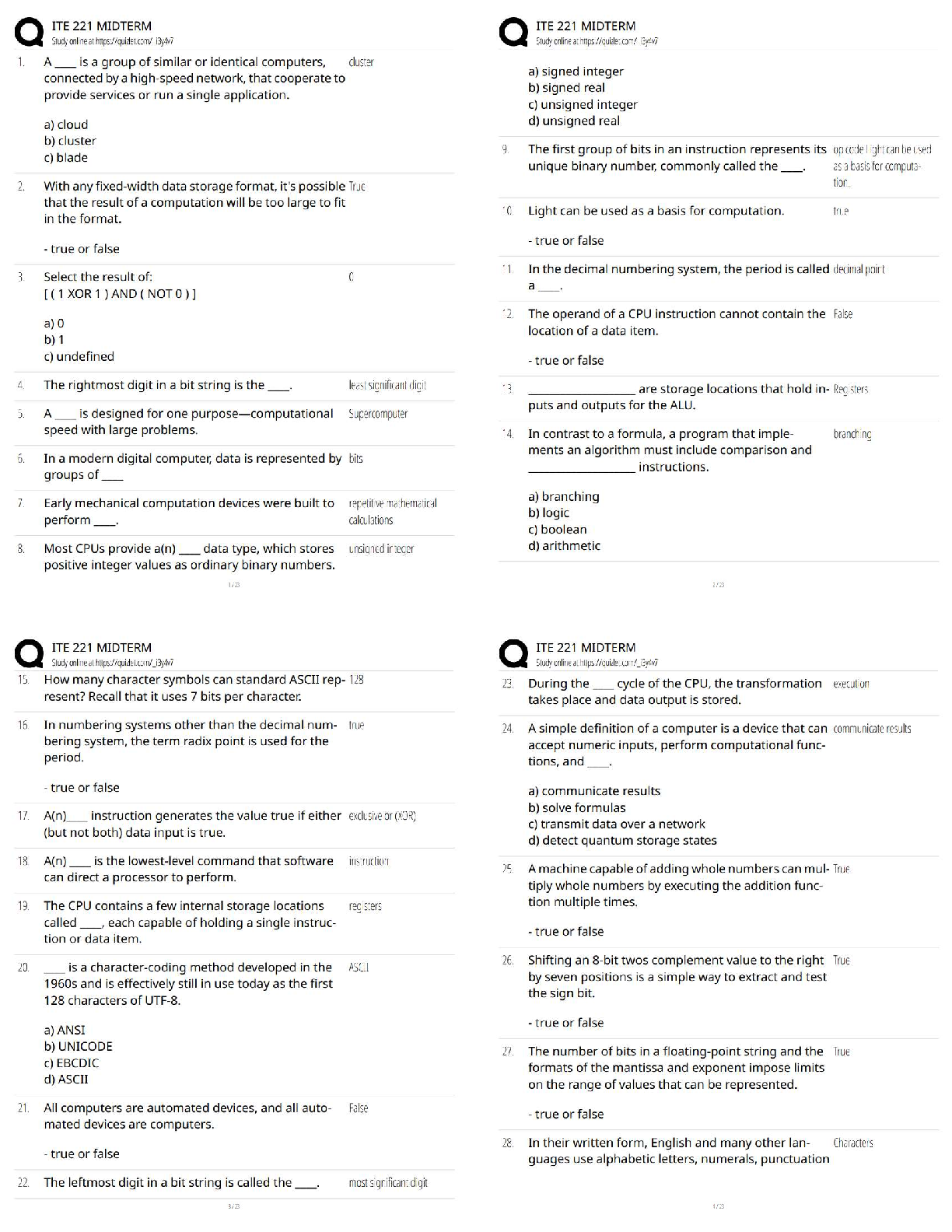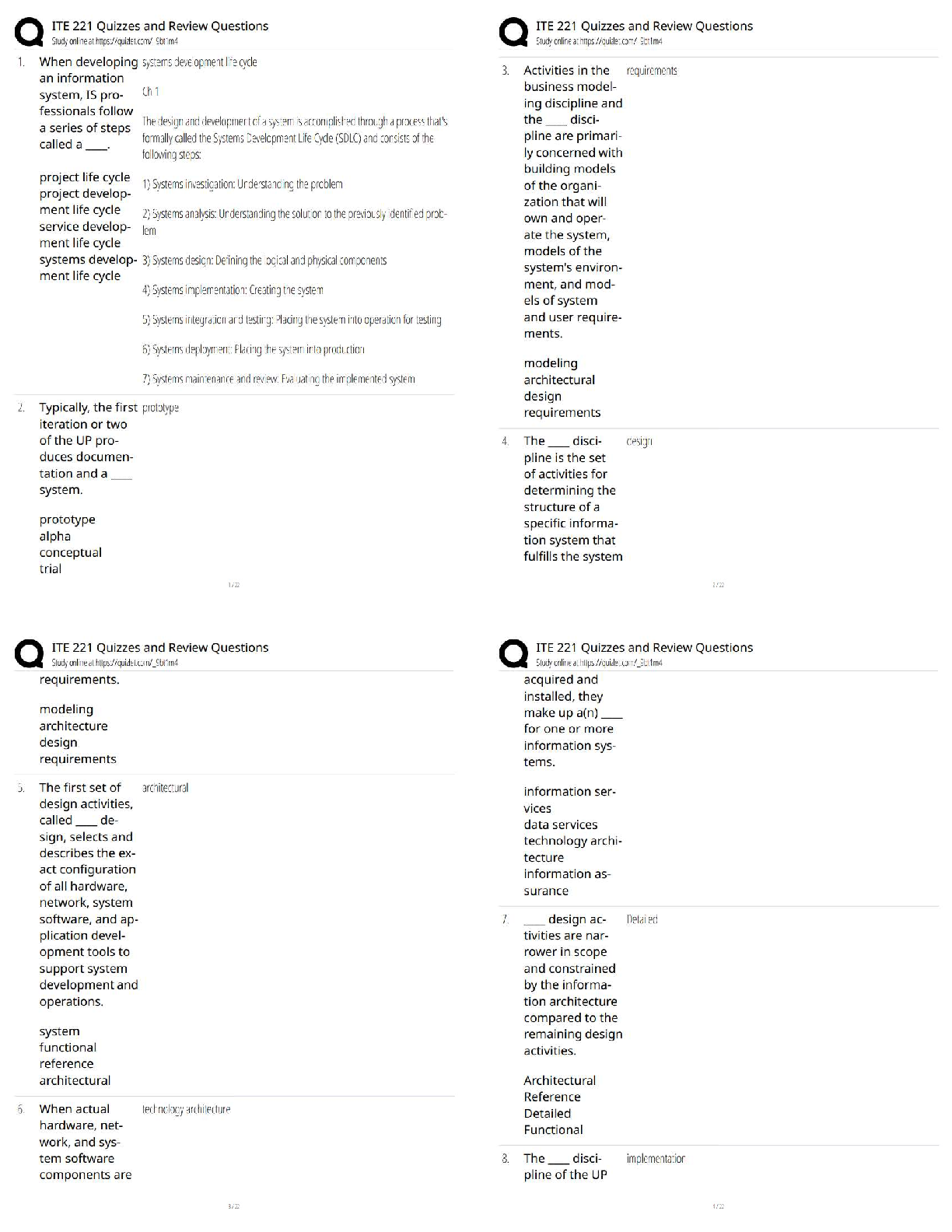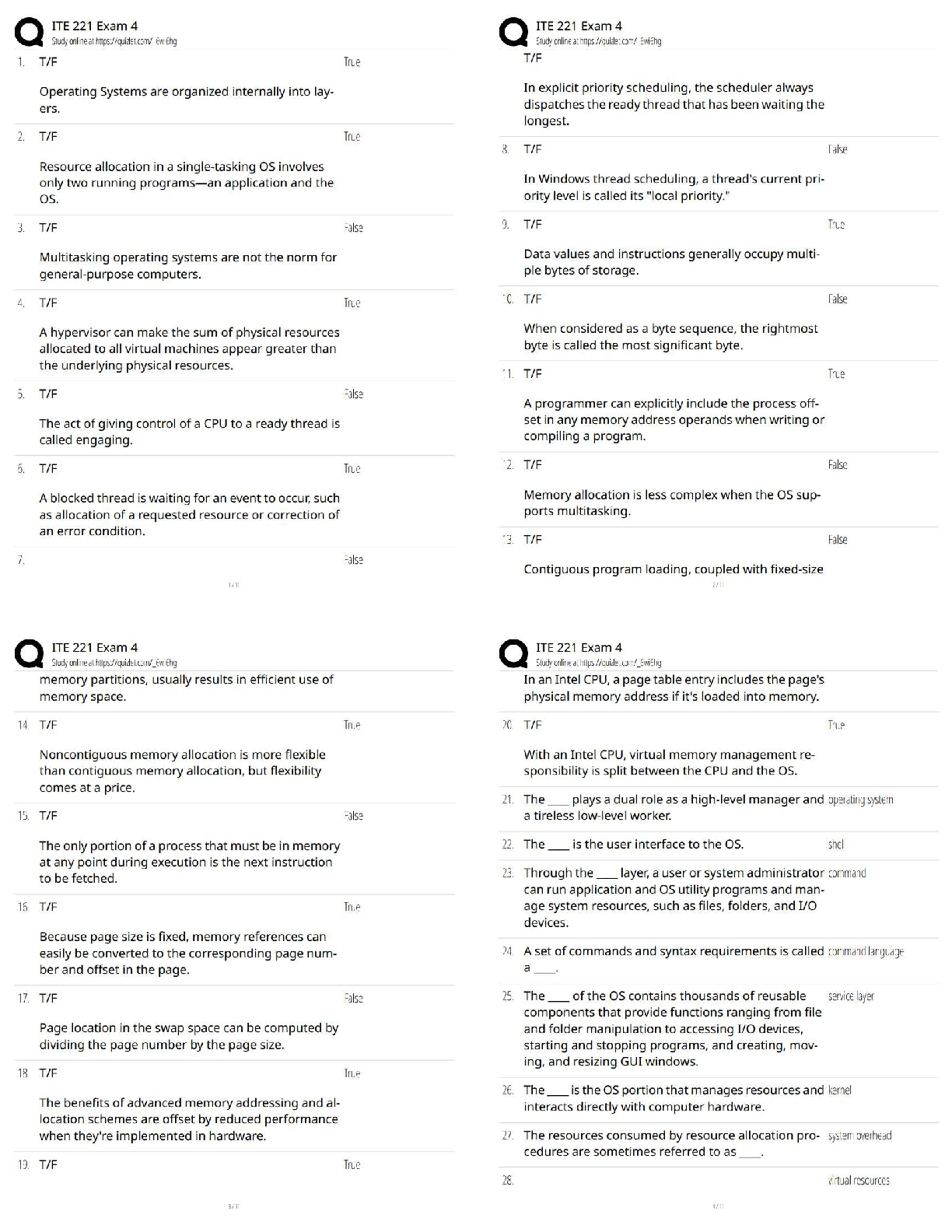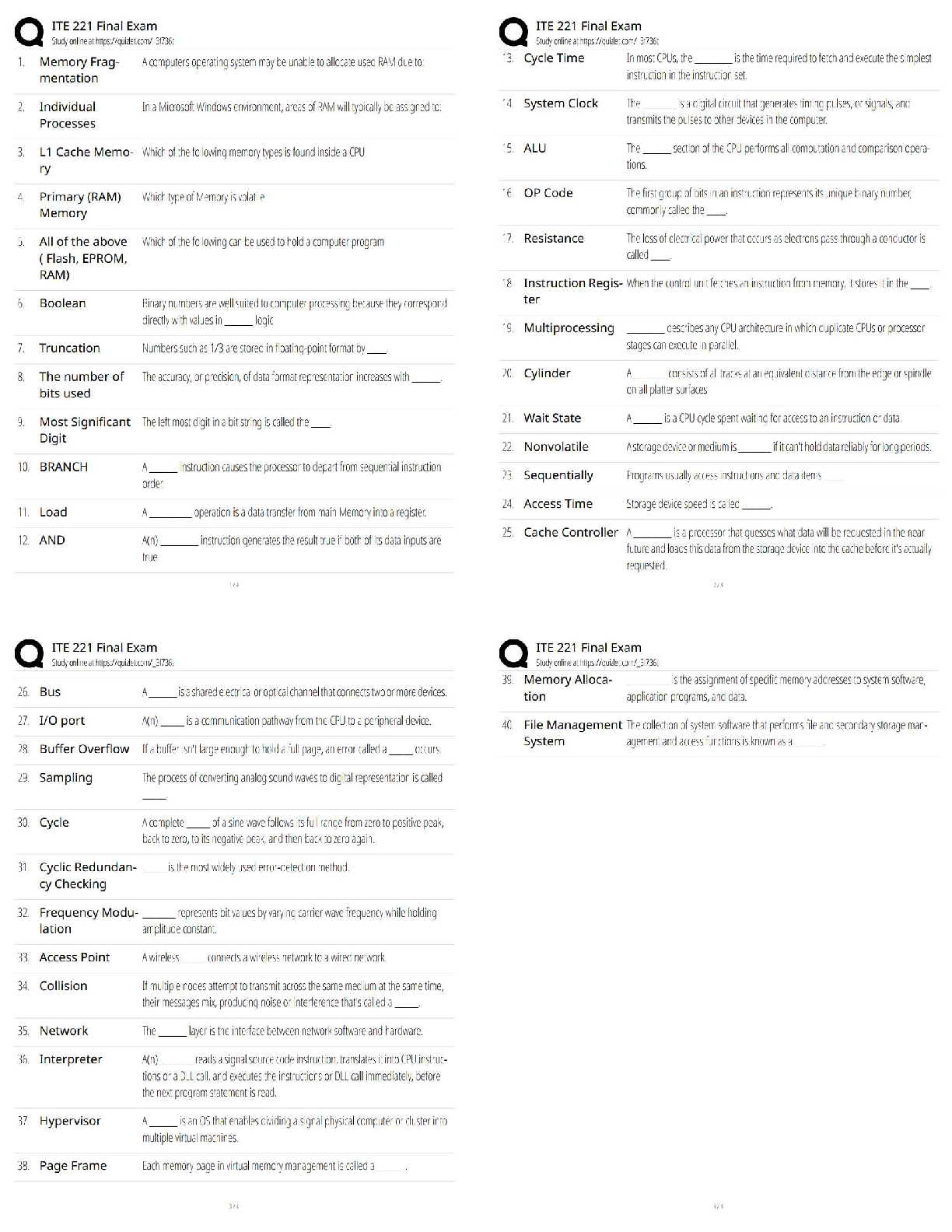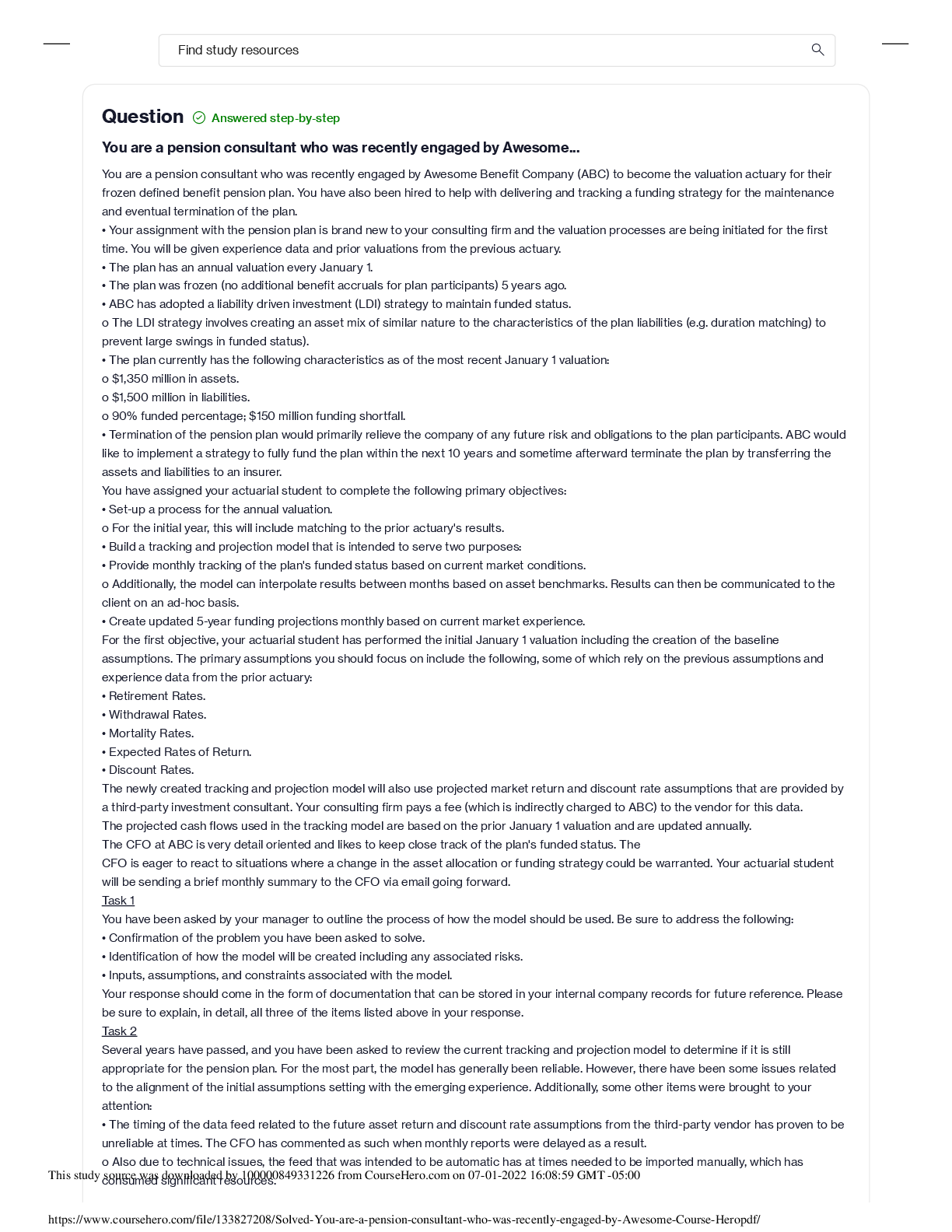Research Methods > QUESTIONS & ANSWERS > JUS 495: CHAPTER 6 Sampling Practice Test With Correct Answers Highlighted (All)
JUS 495: CHAPTER 6 Sampling Practice Test With Correct Answers Highlighted
Document Content and Description Below
MULTIPLE CHOICE 1. A basic principle of probability sampling is that a sample will be representative of the population from which it is drawn if _____. a. all members of the population have an equa ... l chance of being selected for the sample b. the researcher uses a method of selection based upon convenience c. every nth person is selected for the sample d. if the researcher follows rules. 2. The purpose of sampling is to select a set of elements from a population so that the descriptions of the sample statistics accurately portray the parameters of the population. This is best achieved through _____. a. use of a convenience sample b. use of random selection c. use of the sampling element d. use of sampling error 3. Which of the following is not a reason for using random selection methods in selecting samples? a. Random selection is a check on conscious or unconscious bias. b. Random selection gives access to probability theory. c. Random selection allows for estimates of error. d. Random selection allows the researcher to selects cases on an intuitive basis 4. Which of the following are true concerning sampling error? a. If many independent random samples are drawn from a population, then the sample statistics from those samples are distributed in a predictable way around the population parameter. b. Probability theory does not allow us to use a formula to estimate how closely the sample statistics are clustered. c. The standard error cannot identify how spread out of clustered the sample statistics are around the population parameter. d. The standard error generally similar to the standard deviation. 5.Which of the following statements is true concerning the relationship between standard error and sample size? a. there is a positive relationship b. there is an inverse relationship c. As sample size decreases, the standard error decreases. d. As sample size increases, the standard error increases. (decreases p 143 This study source was downloaded by 100000823742721 from CourseHero.com on 08-12-2021 09:41:39 GMT -05:00 https://www.coursehero.com/file/15235906/CHAPTER-6-Practice-Test/ This study resource was shared via CourseHero.com 6. Confidence levels allow the researcher to have some idea of how closely their samples reflect the parameter. Which of the following statements about confidence levels is true? a. If a simple random sample is used, probability theory suggests that researchers can be 95 percent sure the estimates of that sample fall within one standard error of the parameter. b. If a simple random sample is used, probability theory suggests that researchers can be 68 percent sure that estimates of that sample fall within two standard errors of the parameter. c. If a simple random sample is used, probability theory suggests that researchers can almost be positive (99+ percent) that estimates of that sample fall within three standard errors of the true value. d. If a simple random sample is used, probability theory suggests that researchers can be positive that sample mean is equivalent to population mean. 7. Which of the following is not appropriate for use as a sampling frame? a. telephone directories when you wish to sample attitudes toward a new law b. lists of licensed drivers when you wish to ask juveniles their opinions about drinking prohibitions c. taxpayer rolls when the researcher is interested in public concerns about school appropriations in their community d. American Medical Association membership lists to survey doctors about their attitudes concerning HMOs 8. Which of the following is accurate concerning the use of systematic sampling? a. systematic sampling is a poor example of simple random sampling b. systematic sampling is often used as a substitute for stratified sampling c. systematic sampling is frequently used rather than a simple random sample d. systematic sampling is a non-probability sampling 9. When a researcher uses a stratified sampling technique, they _____. a. do not select elements from homogeneous subsets of a population b. recognize the extent that subsets that are homogeneous on stratified variables will generally result in homogeneity on other variables as well c. cannot estimate that a stratified sample is likely to be more representative on a number of variables than a simple random sample d. do not use probability sampling method. 10. When researching a population where it is impossible or impractical to compile a list of the elements, what is the proper sampling technique to use? a. stratified sample b. systematic sample c. cluster sample d. simple random sample This study source was downloaded by 100000823742721 from CourseHero.com on 08-12-2021 09:41:39 GMT -05:00 https://www.coursehero.com/file/15235906/CHAPTER-6-Practice-Test/ This study resource was shared via CourseHero.com 11. Which of the following illustrates a population where cluster sampling would be the best choice? a. law enforcement officers in the United States b. Uniform Crime Reports c. convicted violent criminals d. news paper reports 12. Which of the following is an example of a multistage cluster sample? a. the Self Report Survey b. the National Crime Victimization Survey c. Uniform Crime Reports d. Court records 13. When considering probability sampling in general, it is usually the preferred method for selecting study elements because _____. a. probability sampling sanctions intuition on the part of the researcher b. probability sampling permits the researcher to estimate the sampling error c. probability sampling allows unconscious biases in the selection process d. probability sampling allows selection of the best subjects 14. In order to study active criminals who have not been arrested for their criminal acts, the researcher would be wise to employ which type of sampling technique? a. purposive sampling b. snowball sampling c. convenience sampling d. stratified random sampling 15. The true list of elements in the population is called the _____. a. parameter b. sampling frame c. population d. sample [Show More]
Last updated: 3 years ago
Preview 1 out of 6 pages
.png)
Buy this document to get the full access instantly
Instant Download Access after purchase
Buy NowInstant download
We Accept:

Reviews( 0 )
$9.00
Can't find what you want? Try our AI powered Search
Document information
Connected school, study & course
About the document
Uploaded On
Aug 12, 2021
Number of pages
6
Written in
All
Additional information
This document has been written for:
Uploaded
Aug 12, 2021
Downloads
0
Views
148



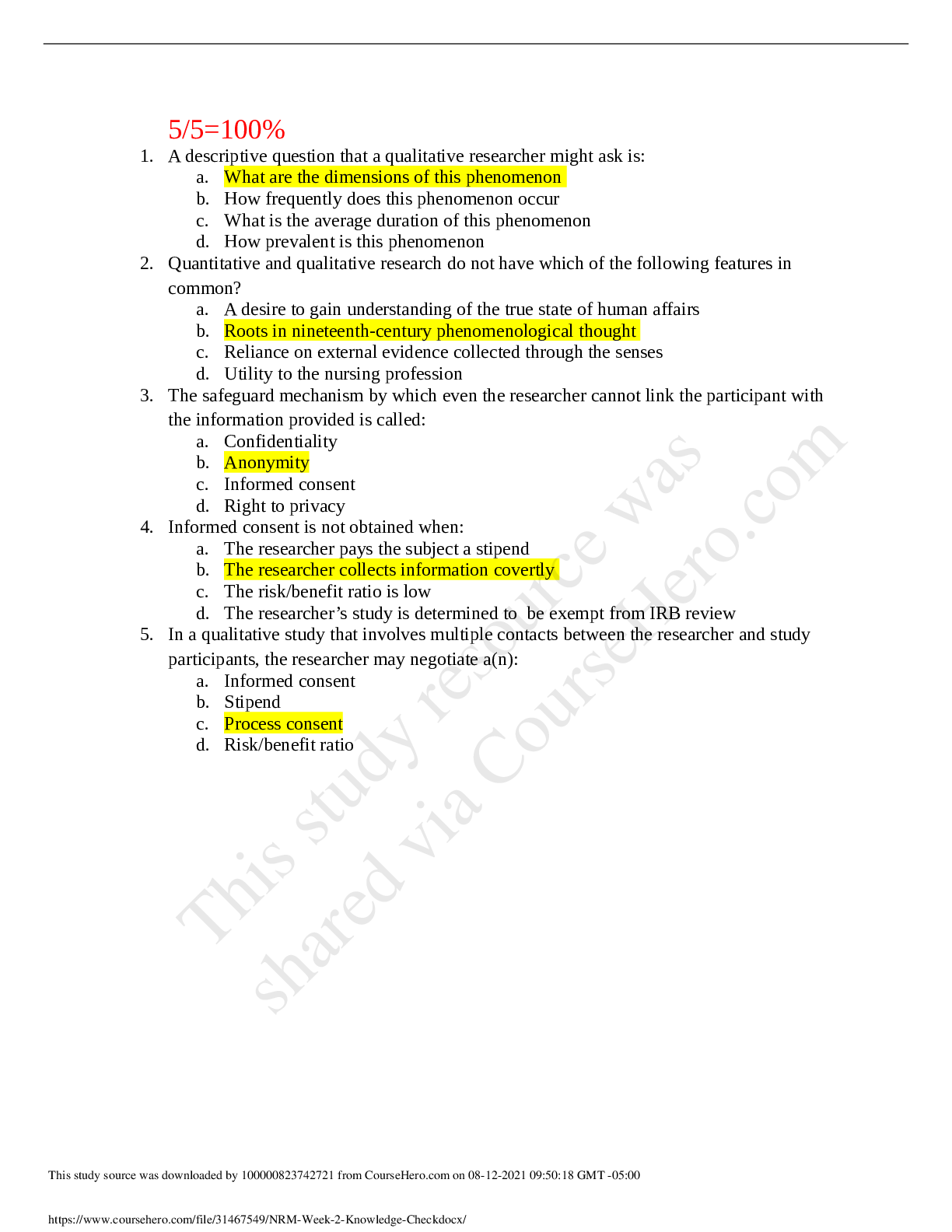






.png)
